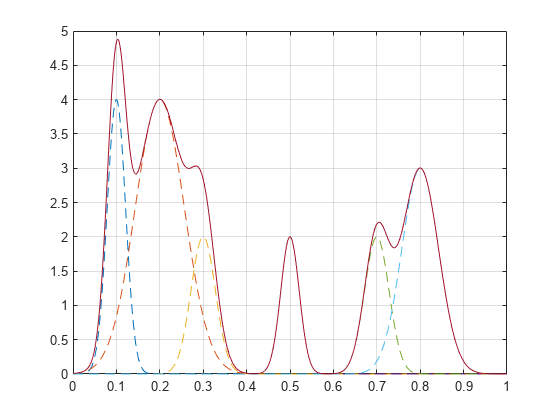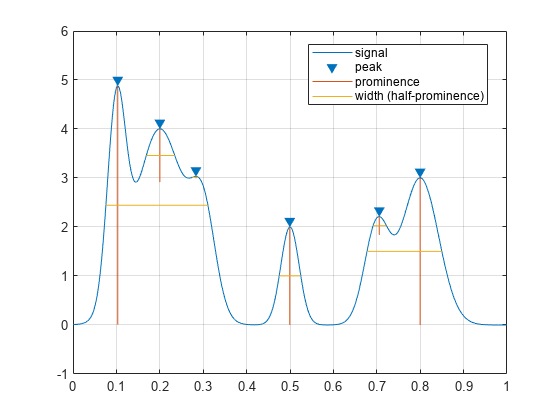ピーク幅の特定
ベル型曲線の和を構成する信号を作成します。各曲線の位置、高さ、幅を指定します。
x = linspace(0,1,1000); Pos = [1 2 3 5 7 8]/10; Hgt = [4 4 2 2 2 3]; Wdt = [3 8 4 3 4 6]/100; for n = 1:length(Pos) Gauss(n,:) = Hgt(n)*exp(-((x - Pos(n))/Wdt(n)).^2); end PeakSig = sum(Gauss);
個々の曲線とその和をプロットします。
plot(x,Gauss,'--',x,PeakSig)
grid
プロミネンスの半分を基準として使用してピーク幅を測定します。
findpeaks(PeakSig,x,'Annotate','extents')

今度は基準として高さの半分を使用して幅を再測定します。
findpeaks(PeakSig,x,'Annotate','extents','WidthReference','halfheight') title('Signal Peak Widths')
